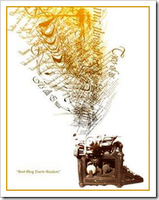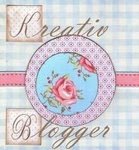Your handwriting reveals that you are Sociable.
Your writing style reflects that you tend to feel connected to others, and that you help to facilitate that connection through your clear written communication. Tickle research indicates that people who are sociable generally have a few or all of the following characteristics in their writing: prefer printing over cursive, a left margin that doesn't get narrower or wider toward the bottom, avoids using very heavy pressure when writing, a large or very large letter size, doesn't print in all lower case letters, &/or regular writing is clear and legible.
Your writing tends to be particularly clear, which is a sign that you're trying to be communicative and make it easy for others to read your writing. Of all of the personality characteristics that are projected in your writing, sociability is the one that predominates. However, Tickle has also included in this report a comprehensive handwriting analysis, using traditional methods, to give you a deeper view into what a handwriting analyst might say about you based on your writing.
The Ten Major Components of Your Handwriting
Graphologists use a number of techniques to decipher your handwriting. Tickle's test focuses on the ten most revealing and prominent traits: Slant, Baseline, Margins, Spacing, Pressure, Size, Speed, Zones, Style, and Signature. This section explains the basic rationale behind each trait, as well as the specific meaning of your personalization of that trait.
Your Slant
As children, we're taught to slant to the right, primarily because we write from left to right. This means that a rightward slant is the most common slant, though some people have a leftward, vertical, or varied slant. While you might assume that left-handed people are more likely to slant to the left, graphologists have discovered that an equal percentage of lefties and righties slant in both directions.
You have a rightward slant. According to handwriting analysts, rightward slant indicates that you focus your thoughts and efforts on the future, despite any fears or reservations about what's to come. Because we write from left to right on the page, leaning toward the right indicates a leaning toward the future. Thus, your slant indicates that you tend to express your true feelings. Your expressiveness may lead you to be particularly affectionate, as well as passionate about the people and things you care about most. Like you, Marie Curie had a distinctive rightward slant.
Your Baseline
The baseline is the invisible line we use to guide our handwriting on a blank sheet of paper. Some baselines are relatively straight, while others slant upward, downward, or vary as the line progresses to the edge of the page. When you start at the left-hand side of the page, you're in the past. As you write across the page, you move through the present and to the future. Handwriting analysts believe that the angle of your baseline as you progress through this metaphorical time continuum reveals information about your general moods, your attitudes toward the past, present, and future, and your level of mental energy.
You have a straight baseline. Handwriting analysts say that this means your emotions and your outward behavior is stable and even-keeled. You likely exert a certain level of self-control over your external expression of your mood. People can count on you to be consistent and careful. While a relatively straight baseline indicates stability, an overly straight baseline (one created by writing with a ruler, or one that looks as if it's been written using a ruler), is a sign that one is over-controlling their behavior to compensate for a deeper fear of losing control.
Your Margins
Graphologists see the blank page as a representation of your life. The top of the page represents your past; the bottom represents your future. Likewise, the left side symbolizes your past, and the right side represents your future. The size and placement of your margins speaks to how you balance your relationship with the past and present, as well as how you interact with the people you encounter. The ideal, standard margin for adults is to start roughly 1 to 1½ inches in from the left and to go as far as you can to the edge of the right-hand side without moving into it and having to crunch your words.
Your Full Page
You exhibit the ideal, standard margins on all sides of the page. Analysts believe this standard formatting indicates a healthy relationship with your past and your future.
Your Left Margin
Because we write from left to right, the left side of the page reveals our feelings about our past. Your standard left margin leads graphologists to conclude that you have a healthy relationship with your past.
Your Right Margin
Our right margins relate to our feelings about the future. Graphologists believe that your standard right margin means you have a timid relationship with the future. You're more likely than others to be inhibited.
Your Top Margin
You have a large top margin. Your adherence to standard formatting points to your more formal, humble nature. Because you allow for the standard amount of room in your top margin, you're likely more considerate and respectful in your interactions with others.
Your Lower Margin
Handwriting analysts deem your lower margin wide. Because the bottom of the page represents the future, your avoidance of some of the usable space in the lower margin may indicate a fear of the future and avoidance of forward-movement in life.
Your Indentations
Because every line of your paragraphs are aligned, as opposed to having an indentation in the first line of each paragraph, graphologists would speculate that you're slightly inhibited and shy.
Your Spacing
The spacing between your letters, words, and lines of writing all reveal how you feel about your relationship to others. Analysts see each word as an expression of yourself, and how close you place those words reveals your unconscious emotional and physical boundaries with others. Because spacing will vary with how fast you're writing, standard spacing is generally anything that doesn't stand out as unusual.
Your Spacing Between Letters and Words
The spacing between your letters and between your words is standard. Analysts say this means that you tend to be orderly, while at the same time maintaining an open-minded and relaxed attitude.
Your Spacing Between Lines
You have standard, even line spacing, which points to your being a consistent, even-keeled person with clear intelligence.
Your Pressure
The pressure of your handwriting relates to how hard you're pressing down when you're writing. Analysts believe that the pressure of one's writing relates to the amount of mental energy and intensity the writer is experiencing. Pressure is a trait that can change regularly, depending on your mood. However, most people generally write with a medium pressure.
The heavy pressure you exert while writing is a sign that you're assertive, energetic, and forceful.
Your Size
Because the blank paper represents your life and your surroundings, the size of your writing represents the way you relate to your surroundings. Analysts learn to determine size by examining many handwriting samples, and comparing those samples over time. Because size isn't a fixed trait, and the size of the paper can impact the size of your writing, it can be useful to view several samples to get the most accurate reading of your handwriting size.
Graphologists would categorize the size of your writing as medium. They'd say you're someone who feels socially normal and possesses an average ability of concentration. The majority of people write this way, except for when they're experiencing a temporary shift in mood.
Your Speed
The speed at which you write is a sign of intelligence, spontaneity, patience, and honesty. Adults of average intelligence who are being truthful generally don't write slowly most of the time. When someone generally writes quickly, but suddenly slows down over a few words, graphologists often suspect that those words could be untrue or conflicted.
The slow speed at which you generally write indicates a guarded nature.
Your Zones
Your handwriting can be dissected into three zones: the upper, middle, and lower zones. Tickle's handwriting test focused on your upper zone, which represents your mind, and your lower zone, which represents your instincts and desires. In graphology, the standard balance for the zones is for your middle zone to take up half the amount of space as your upper or middle zones. Graphologists reap a lot of information from the size and proportion of the zones, as well as the shape of the letters that appear in each zone.
Your Lower Zone
The length of your lower loop is normal, which means you are likely consistent and able to stick with things — such as mates, jobs, and locations — for a long time. The normal shape of your lower loop shows that you're able to maintain an affectionate, monogamous sexual relationship.
The normal shape of your lower loop shows that you're able to maintain an affectionate, monogamous sexual relationship.
The size of your lower loop is normal, which means you're sexually satisfied and happy with the status of your material life.
Your Upper Zone
Your rounded upper loop reveals that you are tender and sympathetic.
The lead in into your upper loop means that you're likely indirect and less efficient than others.
Your Style
The style of your handwriting refers to whether you generally use print or cursive, or a combination of the two. The reason for your choice is significant to graphologists. One reason for this is that printing only certain words or phrases may be an indication of dishonesty. Another reason is that statistically, more men print than women. Some analysts believe this is because boys' fine motor skills aren't as advanced as girls' at the age at which printing is taught, which makes it more difficult in general for boys to learn to write. By the time cursive is being taught, many boys have decided they don't care for handwriting, and even though their fine motor skills have caught up by this point, many are reluctant to take on a whole new kind of writing with the same gusto. Once they're no longer forced to write in cursive, many boys return to print.
Your Printed and Cursive Writing
You've indicated that you generally try to print, even though your cursive writing is legible. Handwriting analysts believe this means you don't want to reveal your true personality to others, and that you consider the effect you have on others.
Capitalization of Your Printed Writing
When you write in standard capital and lower case letters, you maintain the distinctions among the three zones of writing. Handwriting analysts believe this means you like things to be neat and orderly, and that you generally follow the rules necessary to keep things clear.
Your Signature
While the majority of your handwriting communicates your conscious feelings and ideas, your signature represents your unconscious public self-image. In your signature, you convey your public identity: how you see your public self, how you wish others would see you, and how you think others do see you. By comparing your signature with the rest of your writing, graphologists seek to determine if your public and private personas are similar or different. Your
Signature Style
You've indicated that your Signature Style is similar to the rest of your handwriting. This means that you're a person who lives by a "what you see is what you get" ethos. You aren't likely to show off or put on airs in public. Your
Signature Size
Because your signature is slightly larger than the rest of your writing, analysts believe that you have a degree of self-confidence in public that is healthy and appropriate.
Your Signature's Legibility
Having both a signature and writing that are clear and legible indicates that you are considerate and respectful, and that you hope to communicate both your thoughts and your true self to others.
Your Signature's Underscore
Not having an underscore indicates that you don't feel the need to emphasize yourself publicly.
Your Signature's Initials
Because the initials in your signature are the standard amount larger than the other letters, graphologists think you have a desire to stand out in public and be socially prominent.
Your Signature Placement
Placing your signature on the right-hand side of the page indicates that you go along with what you're taught. You're also particularly conscious of your public persona.
Handwriting ABCs
In addition to the ten handwriting traits just discussed, handwriting analysts also take into account the formation of individual letters. This section of your report reveals what graphologists would say about your letter formation.
Your lower-case "b" demonstrates that you have the ability to persevere through difficult circumstances.
Your lower-case "g" reveals that you are an honest person who is well-educated.
Handwriting analysts believe that your lower-case "j" indicates that you think analytically and act cautiously.
Your capital "O" is a sign that you're determined and discreet.
Albert Einstein’s Signature
Handwriting analysts believe you can tell a lot about a person's public persona from their signature. Albert Einstein's signature has initials that are somewhat larger than the rest of his letters. According to graphologists, this indicates that he had a desire to stand out in public and be socially prominent. As one of the most brilliant and imaginative minds of the 20th Century, we also know that Einstein was one of the more publicly playful scientists in history. He certainly didn't seem to mind having his photo taken or being in the spotlight.
Einstein's signature is also pretty legible. Graphologists would interpret this to mean he hoped to communicate his thoughts and true self to others. The ascending baseline in his signature is a sign of healthy mental energy and a strong possibility of success in his endeavors. Sounds about right!
The History of Graphology
The first historical records of graphology date back to 11th century China, where a man named Kuo Jo Hsu said it was possible to discern personality characteristics from people's handwriting. Confucius once said, "Handwriting can infallibly show whether it comes from a person who is noble-minded or from one who is vulgar." Then, in 1622, an Italian man named Camillo Baldi wrote the philosophical book On the Way of Knowing the Nature and Qualities of the Writer by Analyzing a Letter Missive. It wasn't until 1875, though, that French Abbot Jean Hyppolyte Michon coined the phrase "graphology."
In 1869, Frenchman Jean Michon wrote The Mysteries of Handwriting, which was later followed by The Practical Method. Both of these books were based upon countless studies and analysis, and they are still largely the basis of graphology today. At the end of that century, when psychology emerged as a science, psychiatrists Rene Rasten, Paul Joire, and Paul Carton, combined psychology with graphology to create graphotherapy, the science of changing personality characteristics by changing elements and characteristics of the individual's handwriting.
Today graphologists use the empirical method of blind studies to derive data about the meaning behind handwriting. For instance, if graphologists are trying to determine if a particular personality trait, such as alcoholism, can be revealed by handwriting, they first agree on the criteria for that trait, and then they sample a large number of people who are known to have that trait, as well as a control group of a large number of people who don't exhibit this trait. Based on their findings, they determine if this trait can accurately be detected in one's handwriting.
Graphology in the Courtroom
There are all kinds of interesting uses for handwriting analysis; perhaps the most intriguing application is using graphology to solve crimes. Handwriting analysts are often asked to testify in criminal court cases, and often the handwriting of suspects is examined to see if particular writing characteristics are consistent with the traits of the criminal (such as being a deceitful, angry, or extremely introverted person). Graphologists are often employed to examine suicide notes to determine if they're genuine or forgeries done by the deceased's murderer. Handwriting analysis is also useful in determining if wills were signed willingly or under duress, or if a document is a forgery.
In one famous case, handwriting analysis was employed to help link the murderer to his victims. Serial killer Ted Bundy's victims were in different states and were murdered in a variety of different ways, which made it difficult for authorities to link the crimes to one perpetrator. However, Bundy did have one common technique that he used with the majority of his victims: he lured them over by buying them a drink and accompanying it with a note inviting them to sit with him. It was by comparing these notes that investigators realized that they were looking for one serial killer, not several different murderers. Without graphology, authorities may never have realized — or been able to prove — the full extent of his crimes.
References
Amend, Karen, and Ruiz, Mary. Handwriting Analysis. (New Page Books), 1986.
Imberman, Arlyn, and Rifkin, June. Signature for Success. (Andrews McMeel Publishing) 2003. Lowe, Shiela R. The Complete Idiot's Guide to Handwriting Analysis. (Alpha Books), 1999.
McNichol, Andrea. Handwriting Analysis: Putting It to Work for You. (Contemporary Books), 1994.
Rodgers, Vimala. Your Handwriting Can Change Your Life! (Fireside), 2000. Santoy, Claude. The ABCs of Handwriting Analysis: A Guide to Techniques and Interpretations. (Marlow and Company), 1994.
Christmas Ideas For Women – Holiday Gift Guide
5 weeks ago


























0 cherished words:
Post a Comment